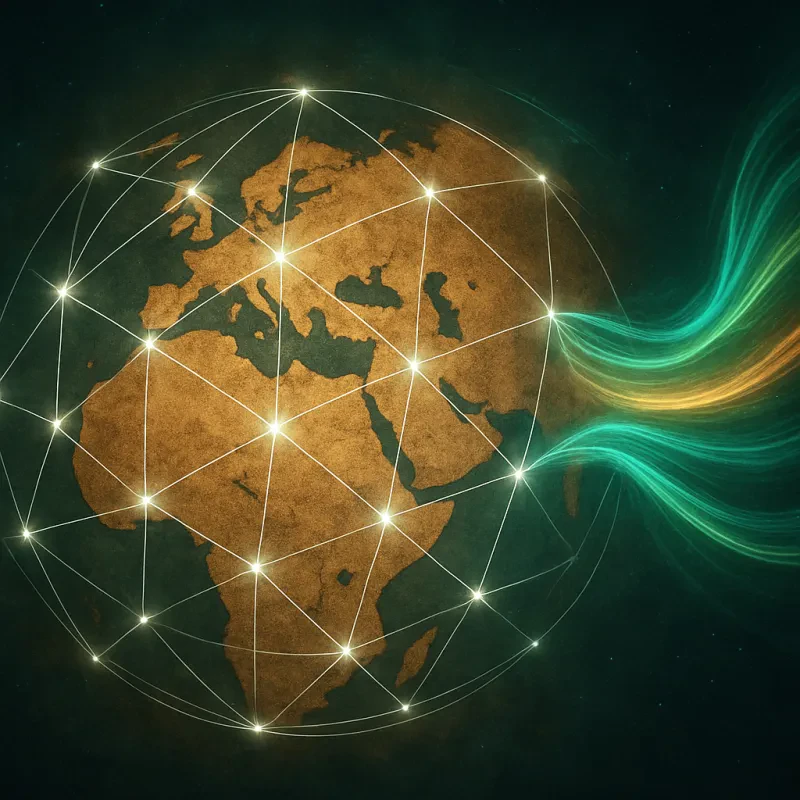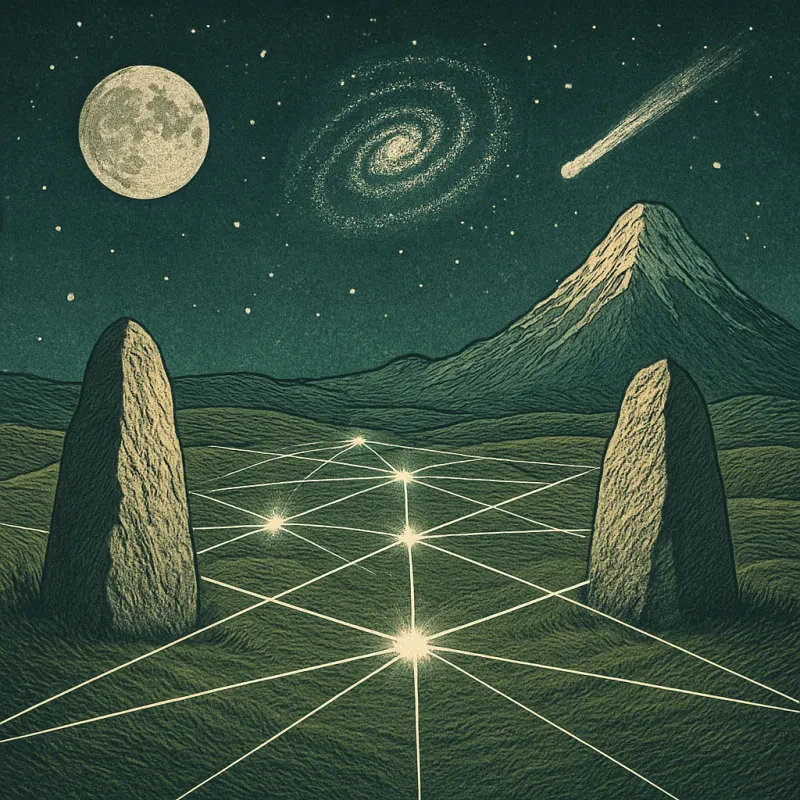Have you ever heard of ley lines? These mysterious alignments are believed to connect various sacred sites and landmarks across the globe. Picture a giant web weaving across the earth, linking everything from ancient stone circles to modern monuments. It's like nature’s own GPS, but instead of driving directions, it connects history, mystery, and spirituality.
The concept of ley lines dates back to the early 20th century, though people have noticed these alignments for much longer. Some folks claim that these invisible lines carry energy and are significant for spiritual practices. Whether you're a believer or a skeptic, it’s fascinating to explore how different cultures have interconnected these landmarks through history.
Some of the most famous sites that fall along these mystical lines include Stonehenge in England and the Great Pyramids in Egypt. Can you imagine standing at Stonehenge and thinking about its connection to places thousands of miles away? It gives a whole new meaning to the idea of connection, doesn’t it?
Exploring ley lines can be like going on a treasure hunt. Many enthusiasts trace these paths and visit the landmarks along the way, often feeling a sense of peace or energy in these places. If you're curious, consider mapping your own ley line road trip. Who knows what hidden gems—or revelations—you might discover along the journey!
Exploring Notable Landmarks on Ley Lines
When you think of ley lines, you might picture mystical energy lines crisscrossing the Earth. But did you know that many famous landmarks are believed to sit right on these invisible paths? Exploring these sites can spark your imagination and connect you with their ancient histories.
For starters, Stonehenge in England is a prime example. This ancient stone circle isn’t just a mysterious site; it's positioned along ley lines believed to channel energy. Visitors often describe a sense of tranquility or heightened awareness while standing among the stones. If you’re ever in the area, take a moment to soak in the vibes.
Moving across the ocean, we can find the Great Pyramid of Giza in Egypt. Not only is it an architectural marvel, but it's also said to be aligned with various ley lines. Many travelers feel an inexplicable connection to the site, perhaps due to its powerful history and cosmic alignments. It's definitely a bucket-list destination for anyone interested in the mystery of ley lines.
Finally, let's not forget about the famous Nazca Lines in Peru. These enormous geoglyphs, while more than just landmarks, are thought to connect with ley lines, too. Seeing these incredible designs from above is a uniquely magical experience, and many believe they hold significant energy that draws both tourists and spiritual seekers alike.
The History Behind These Mystical Connections
Have you ever heard of ley lines? These fascinating alignments are thought to connect sacred sites, ancient monuments, and natural landmarks across the globe. The idea is that these invisible lines, running straight through the Earth, are linked to a mystical energy that has attracted people for generations. But how did this concept come about?
The term "ley line" was first introduced in the early 20th century by Alfred Watkins, an English writer and antiquarian. While exploring the landscapes of England, he noticed that many ancient sites lined up in straight paths. This inspired him to theorize that our ancestors must have created these alignments for navigation or spiritual purposes. His book, "The Old Straight Track," opened the door to a whole new way of thinking about the connections between man-made structures and the Earth itself.
Over the years, ley lines have captured the imaginations of many, sparking interest in ancient cultures and their spiritual beliefs. It's not just a phenomenon in England; you can find these mystical alignments in various places worldwide. From the pyramids of Egypt to Stonehenge in the UK, many believe these sites are powerful beacons of energy, somehow interconnected by these invisible lines.
People fascinated by ley lines also often link them to other esoteric concepts, like geodetic lines and earth energies. Believers argue that standing on or near these lines enhances spiritual experiences, making visits to these landmarks even more special. While science hasn’t fully supported these claims, the lore surrounding ley lines adds a layer of intrigue to these historical sites.
How to Visit These Enigmatic Sites
Visiting iconic sites that are said to be connected by mystical ley lines is an adventure like no other. To make the most of your trip, it's essential to plan ahead. Start by researching the specific landmarks you want to explore, like Stonehenge, the Great Pyramid of Giza, or Machu Picchu. Knowing a bit about their history and significance will enhance your experience.
Once you have your list, consider the best time to visit each location. Some sites are incredibly popular, so avoiding peak tourist seasons can lead to a more peaceful experience. Plus, early mornings or late afternoons often provide softer light for photography, making your visit even more memorable.
Transportation can be a critical part of your journey. Look into guided tours if you’re new to the area—these can offer insights you might miss on your own. If you're feeling adventurous, renting a car allows for more flexibility to explore nearby sites connected by the ley lines.
Bring along a journal or a camera. Documenting your journey doesn't just help you remember the experience; it can also encourage you to reflect on the energy and mystique of these powerful places. Don't forget to take breaks and enjoy the surroundings; sometimes, the most magical moments happen when you’re just soaking it all in!


